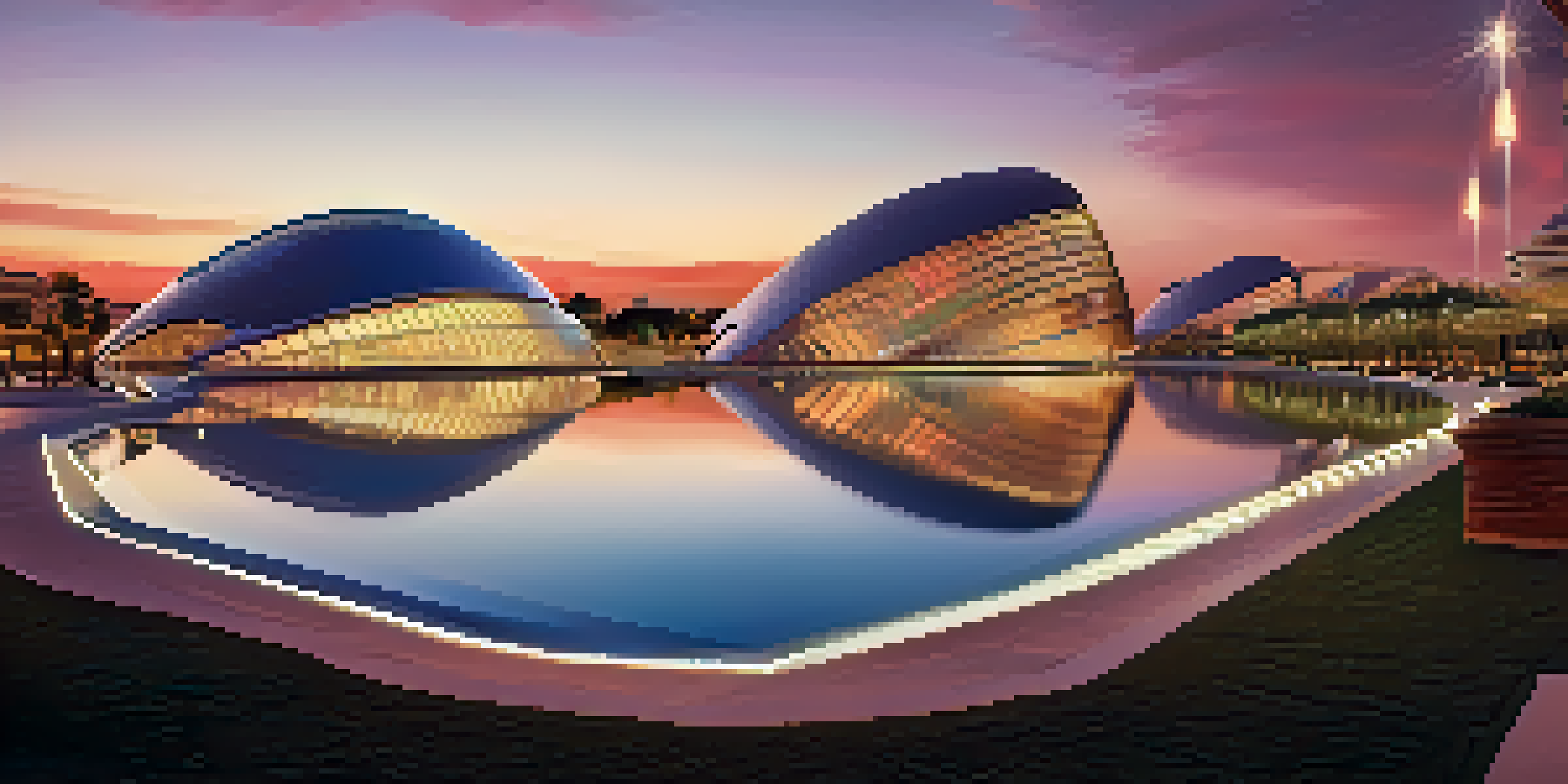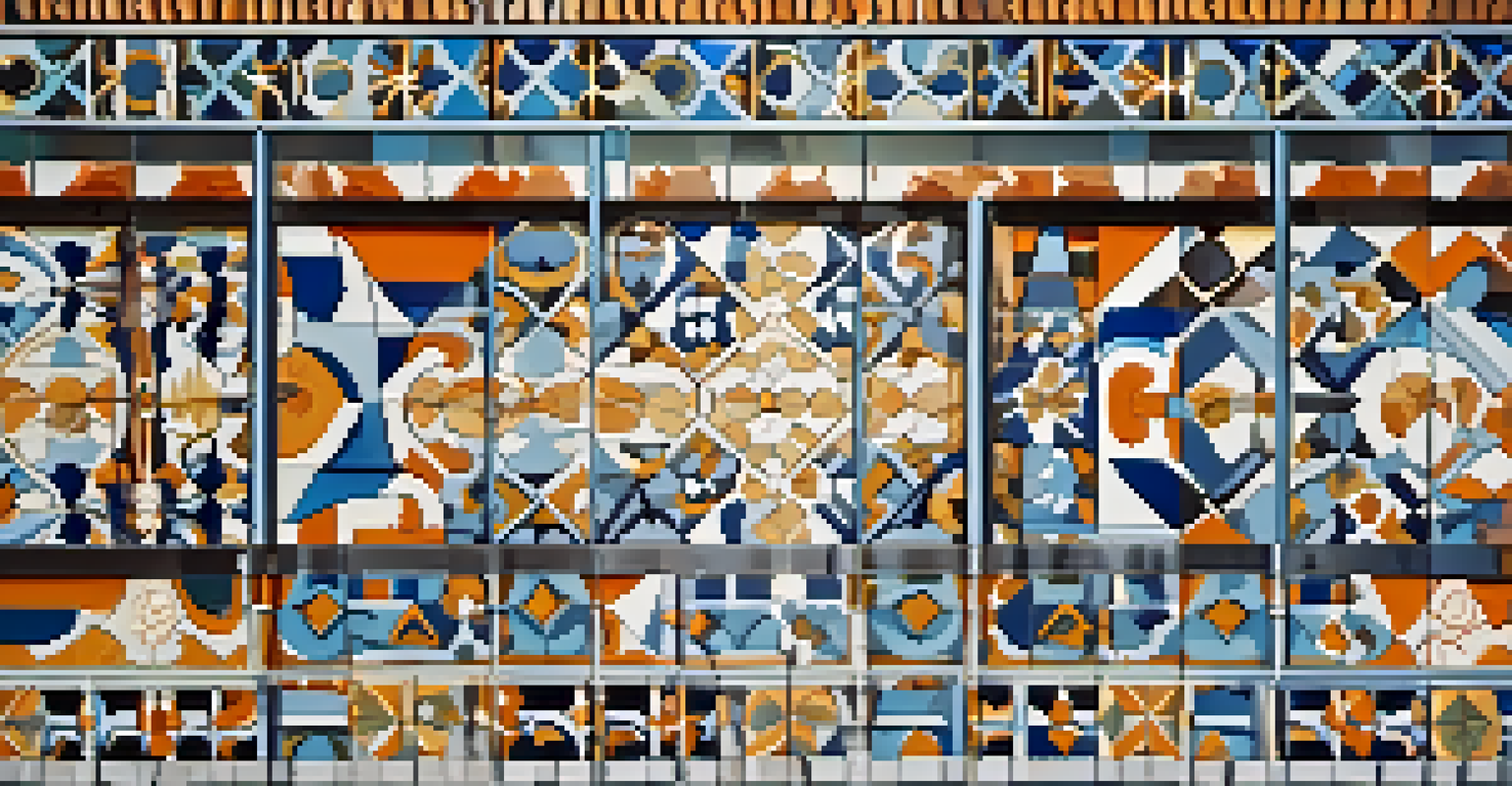Modern Architecture in Valencia: A Tour of Innovation

The Rise of Modern Architecture in Valencia
Valencia has emerged as a hub for modern architecture over the past few decades. The city's unique blend of history and innovation creates a vibrant backdrop for groundbreaking designs. With its commitment to architectural experimentation, Valencia showcases how modern structures can harmonize with traditional surroundings.
Architecture is the learned game, correct and magnificent, of forms assembled in the light.
One of the significant drivers of this architectural evolution has been the city's investment in public spaces and infrastructure. Projects like the City of Arts and Sciences have not only redefined the skyline but also the cultural landscape of Valencia. These spaces invite both locals and tourists to engage with the city's artistic and scientific pursuits.
Furthermore, Valencia's climate and geography provide a fantastic canvas for architects. The interplay of light and shadow in this Mediterranean city is a critical consideration in many designs. As architects harness these natural elements, they create spaces that are not only visually stunning but also environmentally attuned.
Key Architectural Marvels: A Closer Look
When discussing modern architecture in Valencia, the City of Arts and Sciences stands out as an iconic masterpiece. Designed by Santiago Calatrava, this complex features futuristic structures that resemble organic forms, captivating visitors from around the world. Its unique blend of science, art, and nature has made it a symbol of Valencia's innovative spirit.

Another noteworthy example is the Valencia Congress Centre, designed by Santiago Calatrava as well. This multifunctional venue showcases not only striking aesthetics but also advanced technology. Its dynamic shapes and spacious interiors facilitate a wide range of events, from conferences to cultural exhibitions.
Valencia's Architectural Evolution
Valencia has become a hub for modern architecture, blending historical influences with innovative designs.
Lastly, the Veles e Vents building in the marina exemplifies the integration of modern design with functional purpose. Designed by David Chipperfield, it serves as a viewing platform and event space, offering breathtaking views of the harbor. This building beautifully illustrates how modern architecture can enhance public enjoyment while contributing to the urban environment.
Innovative Use of Materials and Techniques
Modern architecture in Valencia is characterized by the innovative use of materials. From glass and steel to eco-friendly composites, architects push the boundaries of what is possible. These materials not only enhance aesthetic appeal but also improve energy efficiency and sustainability, a crucial consideration in today's world.
Sustainability is not a destination, but a journey, a process of continuous improvement.
For instance, the use of glass in buildings like the Oceanogràfic allows for natural light to flood the interior spaces. This creates a sense of openness and connection to the outside environment. Additionally, the transparency of glass structures engages visitors, inviting them to experience the surrounding beauty.
Moreover, techniques such as parametric design are gaining popularity among Valencia's architects. This approach allows for more fluid and dynamic forms, responding to both functional needs and aesthetic desires. By embracing technology, architects can create structures that adapt to their surroundings and offer unique experiences.
Valencia's Commitment to Sustainability
Sustainability is at the forefront of modern architecture in Valencia. As the city faces challenges related to climate change, architects are increasingly focusing on eco-friendly designs. This commitment not only benefits the environment but also enhances the quality of life for residents and visitors alike.
Many modern buildings incorporate green roofs, solar panels, and rainwater harvesting systems. These features not only reduce energy consumption but also promote biodiversity within urban settings. For example, the green roof of the Valencia Congress Centre provides insulation while creating a habitat for local wildlife.
Sustainability Drives Design Choices
Architects in Valencia focus on eco-friendly materials and techniques, enhancing energy efficiency and urban livability.
Additionally, Valencia's urban planning emphasizes walkability and public transport. By designing neighborhoods that prioritize pedestrians and cyclists, the city aims to reduce carbon emissions. This holistic approach to sustainability showcases how modern architecture can contribute to a healthier, more livable urban environment.
Cultural Influence on Modern Designs
Valencia's rich cultural heritage profoundly influences its modern architectural landscape. The city’s history, traditions, and local art are often reflected in contemporary designs. This melding of the old and the new creates a unique architectural narrative that is distinctively Valencian.
For instance, the use of traditional ceramics in modern facades pays homage to the region's artisanal roots. These colorful tiles not only enhance visual appeal but also connect new structures to the cultural fabric of the city. Such thoughtful integration ensures that modern architecture resonates with the community.
Furthermore, local festivals and events often inspire architectural projects. The Fallas Festival, known for its elaborate sculptures, has influenced the design of public spaces that celebrate art and creativity. By fostering a dialogue between tradition and innovation, Valencia's architecture tells a compelling story of its evolution.
Public Spaces: The Heart of Valencia's Modern Architecture
Public spaces play a pivotal role in Valencia's modern architectural narrative. These areas are designed not just for aesthetics but to foster community interaction and engagement. Parks, plazas, and waterfronts become vibrant venues for social activities, enhancing the urban experience.
The Turia Gardens, a former riverbed transformed into a lush green park, exemplify this concept. This expansive space offers recreational opportunities while incorporating modern design elements. It invites residents to explore, relax, and connect with nature amidst the urban hustle.
Cultural Heritage Shapes Structures
Modern buildings in Valencia often reflect the city's rich cultural background, integrating traditional elements into contemporary designs.
Moreover, Valencia’s waterfront area has seen significant redevelopment, with modern structures complementing the natural landscape. The integration of pedestrian walkways and recreational zones encourages a sense of community. These thoughtfully designed public spaces reflect Valencia's commitment to enhancing the quality of life for its inhabitants.
The Future of Modern Architecture in Valencia
As Valencia continues to evolve, the future of modern architecture looks promising. Architects are embracing technological advancements, sustainability, and innovative design philosophies. This forward-thinking approach ensures that Valencia remains a beacon of architectural excellence.
Emerging trends such as smart city technologies are beginning to influence new projects. These systems enhance urban living by improving infrastructure, transportation, and public services. As a result, Valencia is poised to become a model for how modern architecture can contribute to smarter, more sustainable cities.

Ultimately, the future of Valencia's architecture will likely reflect the city's dynamic spirit. By balancing innovation with cultural heritage, Valencia can create spaces that inspire and engage future generations. The journey of modern architecture in this vibrant city is just beginning, and we can’t wait to see where it leads.